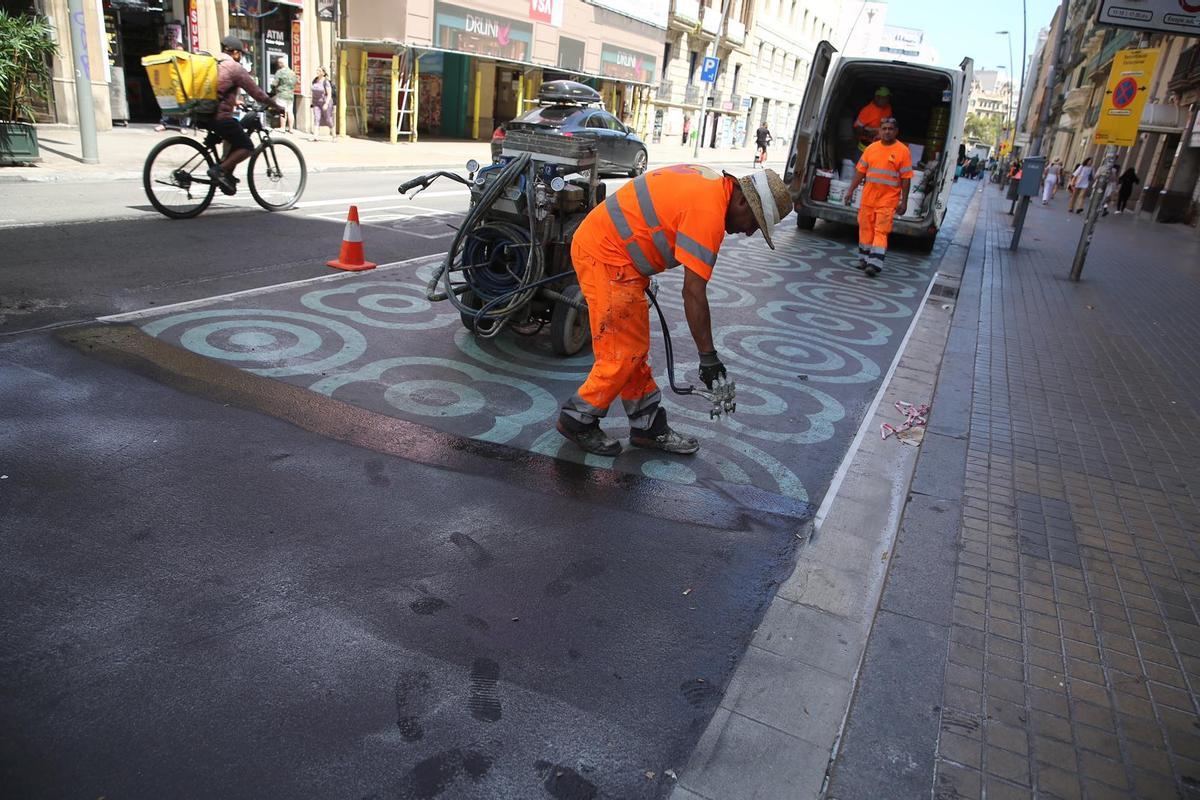In an unexpected twist in Barcelona’s urban landscape, work has begun to reverse the so-called “tactical urbanism” that had been implemented on Pelai Street during the pandemic.
This measure had expanded the pedestrian area of the street, but now the new consistory led by Collboni is undoing this transformation in order to create more parking spaces for motorcycles, bicycles and loading and unloading.
This decision has sparked a debate among citizens and has generated divided opinions. On the one hand, Laia Bonet, the first deputy mayor, argues that the pedestrian extension implemented in the last two years has had practically no pedestrian use.
However, on the other hand, there is criticism from neighborhood platforms and other stakeholders, who argue that this reversal will not only negatively affect air quality in the city, but will also undo progress towards a more pedestrian-friendly urban space.
Tactical urban planning in Barcelona for more parking spaces
The objective of this transformation is to create new parking spaces for bicycles and motorcycles in the city center. The goal is to provide 72 bicycle parking spaces, 64 motorcycle parking spaces and 20 loading and unloading spaces.
These squares will be located in the section between Universitat square and Balmes street, also maintaining spaces for containers. Between Balmes and Plaça Catalunya, parking spaces will be created for bicycles and motorcycles, and loading and unloading spaces will also be maintained.
The measure has generated criticism from groups concerned about air quality and sustainable mobility in the city.
The Eixample Respira neighborhood platform has expressed concern that this reversion will increase pollution and has called for a complete pacification of Pelai Street, in line with other successful models in the city, such as Portal de l’Àngel.
The projection of the works
The work to remove the “tactical urbanism” may take approximately one week. This transformation is expected to fit within the framework of the Endreçat Plan presented by Laia Bonet and the security councilman, Albert Batlle, in July.
It should be noted that while this measure is intended to provide more parking options, it also raises questions about the necessary balance between mobility and pedestrian convenience.
This discussion of Barcelona’s urban space reflects the challenges inherent in the planning and management of constantly evolving cities.
The struggle between mobility needs, air quality and citizen comfort is a reminder that every decision in urban planning must carefully consider all stakeholders and seek solutions that balance the diverse demands of an ever-changing city.

